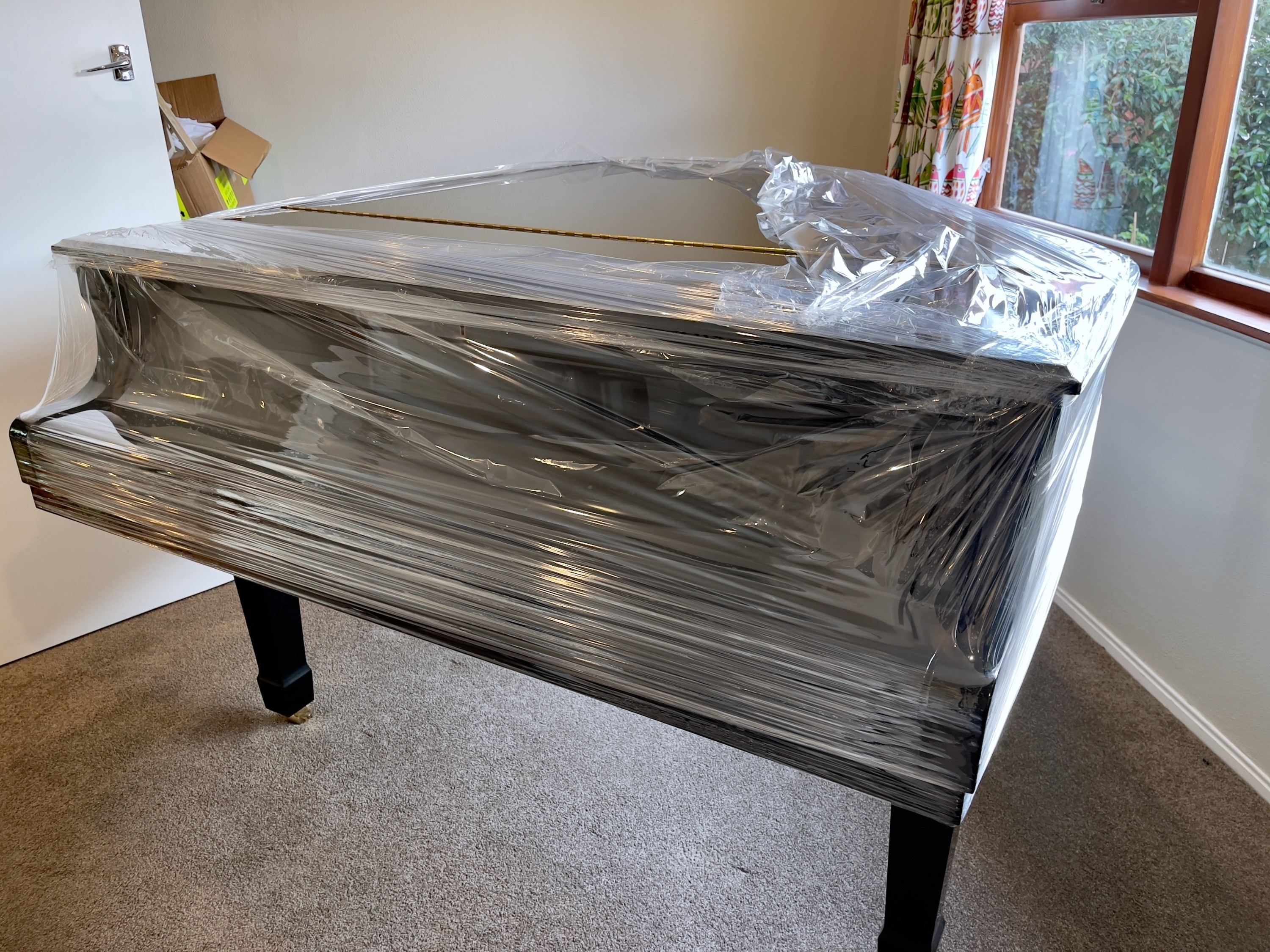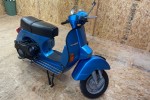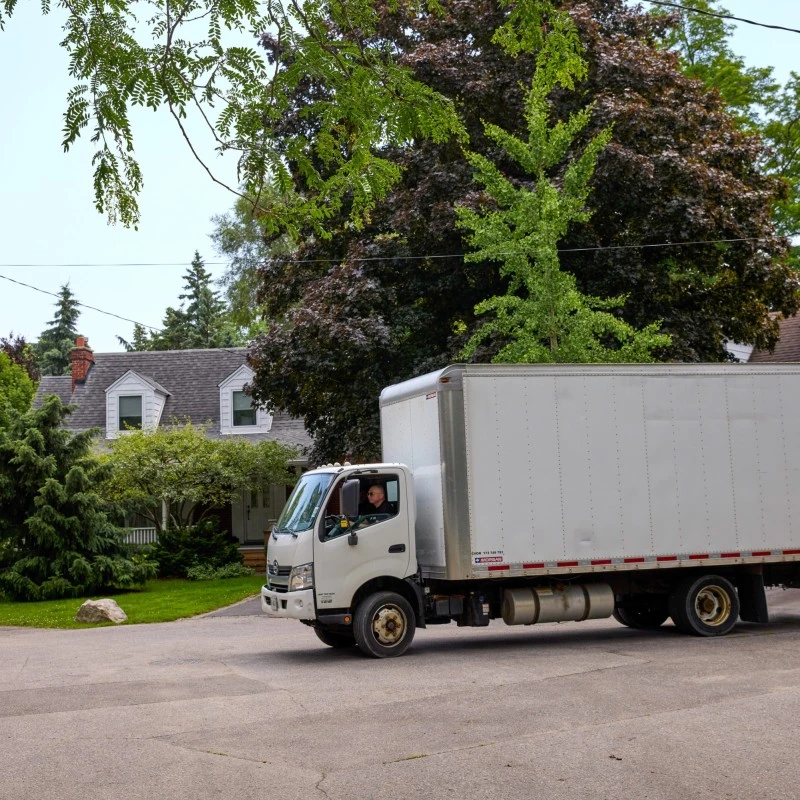Here's How to Move a Piano Safely With No Damages

In this article, we dvelve into:
-
Types of Pianos for the Move: Understanding your piano's needs.
-
Detailed Pre-Move Preparation Guide: Essential steps before the big move.
-
Checklist of Required Tools and Materials: Arm yourself with the right gear.
-
Step-by-Step Moving Instructions: A foolproof plan for every stage.
-
Safety Tips for DIY Movers: How to move without mishaps.
-
Considerations on Size and Weight: Tackling the bulk without the bulkiness.
-
Pros and Cons of Hiring Professional Movers: To hire or not to hire?
-
Storage Solutions: Smart ways to store your piano.
P.S. if you're feeling overwhelmed, Top Move is here to lighten the load. Think of us as your one-stop shop for finding trustworthy movers who specialize in pianos. We make moving your piano as seamless as playing a melodious tune.
Understanding Your Piano: Types and Moving Challenges
For piano owners, moving their musical instruments is a task that demands understanding the unique characteristics and challenges. Each type of piano requires a specific approach to ensure a safe and successful move.
Grand Pianos
Most grand pianos necessitate the removal of legs and pedals before moving. This task, requiring delicate handling and expertise, is usually best left to professional movers. Its weight, ranging from 700 to 1200 pounds, coupled with its length often exceeding 5 feet, means you need ample space for maneuvering. Using a piano board is essential for safely transporting this type of piano.
Upright Pianos
Despite being more compact, moving an upright piano, especially through narrow corridors or steep stairs, can be a challenge. These pianos typically weigh between 300 to 500 pounds. The height of an upright piano, ranging from 40 to 60 inches, makes it top-heavy. Careful tilting and balancing are crucial during the moving process.
Baby Grand Pianos
These pianos while smaller than a grand piano but larger than an upright piano, still require meticulous disassembly and handling due to their delicate parts. The piano's weight, approximately 500 pounds, is not evenly distributed, posing a challenge during transportation.
Each piano type, from a grand piano to both an upright piano and a baby grand piano, has its own set of moving intricacies, primarily centered around the piano's weight and structural design. Understanding these is key to ensuring your piano's safe relocation.
Pre-Move Prep: Setting the Stage for a Smooth Piano Move
The journey of moving a piano begins with thorough preparation, ensuring every detail is addressed for a smooth transition. Here’s your guide to prepping your piano, whether it's heading upstairs or across the city.
Inspection
-
Assess and Document: Conduct an in-depth inspection of your piano. Document any existing wear like scratches or dents, which is vital for insurance claims.
-
Capture Images: Capture clear, date-stamped photos from various angles. This visual record is crucial, especially for pianos with unique designs or finishes.
-
Special Attention to Keys and Pedals: Examine the keys and pedals for any loose parts or irregularities. This is often overlooked but is crucial for maintaining the piano's functionality after the move.
-
Professional Assessment: Consider having a professional piano technician assess your piano. They can identify potential issues that might be exacerbated during the move, like internal mechanical problems.
Measurements
-
Precise Piano Measure: Measure your piano’s dimensions accurately. This is essential when using tools like a piano board, ensuring it fits and is transported securely.
-
Route Planning: Don't forget to measure doorways, staircases, and hallways along the moving route. This step is critical, especially if you're maneuvering the piano upstairs or through narrow spaces.
-
Height Clearance: When measuring for the move, also check for height clearance in areas like low ceilings or overhanging fixtures, which could be obstacles during the move.
-
Consider the Move's End Point: Measure the space where the piano will be placed in its new location. Ensure there’s enough room for the piano and for movers to maneuver it into position without damage.
Top Move Tip: A laser measure can be invaluable for precision, providing exact measurements and helping avoid common spatial errors.
Securing the Piano Lid
-
Lock or Wrap: If your lid comes with a lock, use it for secure transport. For pianos without a lock, wrap the lid carefully with stretch wrap to prevent it from opening during the move.
-
Protective Padding: Along with securing the lid, add protective padding around the piano’s edges and corners. This extra cushioning can protect both the piano and your walls from accidental bumps during the move.
-
Removable Parts: If your piano has any removable parts (like music stands or decorative elements), remove and pack them separately. This reduces the risk of damage and makes the piano easier to move.
Top Move Tip: Ensuring the lid is secure is especially important for pianos with delicate inlay work or intricate designs.

Essential Toolkit for Piano Moving
Every successful piano relocation relies on proper equipment and moving supplies. This checklist guarantees you're equipped to move your piano safely, reducing damage risk.
-
Piano Skid Board and Dolly: A heavy-duty piano dolly is vital for supporting weight, which can be over several hundred pounds. A skid board is also crucial, especially for grand pianos, facilitating safe horizontal transport. Both should have rubber wheels to protect floors and enable a smoother move.
-
Moving Blankets: Thick, cushioned moving blankets provide essential protection. Secure them with packing tape.
-
Packing Tape and Bubble Wrap: Perfect for safeguarding fragile components like the music rack and keyboard cover. Bubble wrap adds extra protection, complementing the moving blankets. Use strong loop tape for secure wrapping.
-
Moving Straps: Sturdy straps anchor the piano to the skid board, crucial for stability during transit, particularly in challenging areas.
-
Padding: Foam padding at contact points between the piano and straps prevents damage from pressure. Moreover, corner guards are invaluable for shielding the piano's edges.
Mastering Piano Moving: A Step-by-Step Approach
Transporting a piano is similar to a well-orchestrated concert. it demands precision, coordination, and a well-prepared moving team. Every step, from securing the lid to loading it onto the truck, plays a critical role in ensuring the safe relocation of your instrument.
1. Lock the Lid
Confirm the keyboard lid is locked. For pianos without a lock, use stretch wrap to secure the lid, ensuring it’s fast but not too tight to prevent damage. Adding a soft cloth over the keys offers extra protection against jarring.
2. Wrap the Piano
Generously wrap the piano with moving blankets, covering all sides. This acts as the first defense against bumps and scratches. Use packing tape to secure the blankets, but ensure it doesn't touch the piano's surface directly. Taping the blankets to themselves rather than around the piano is a safer approach.
3. Lifting the Piano
A piano requires heavy lifting hence assemble a team of at least four people, depending on the piano's size and weight. Lift from the base, not by the piano's legs or pedals, to avoid damage. Utilize tie-down straps to distribute the weight evenly among the moving team, especially if stairs are involved.
4. Place on the Dolly Underneath
Carefully place the piano on a heavy-duty dolly. Slight tilting may be required, but ensure it's done gently and with enough support. Once on the dolly, strap the piano down firmly but without excessive tightness to prevent pressure. Use a piano board underneath the piano for additional stability.
Top Move Tip: For a grand piano, lay it on its side on a piano skid board and secure it. This procedure should ideally be handled by professionals.
5. Navigate Through Doors and Hallways
Proceed slowly and maintain clear communication with your team. Designate one person to guide the movers from a position where they can see the entire path. When navigating corners, push the piano rather than pull. This offers more control and minimizes the risk of tipping.
Top Move Tip: Use a door stopper to keep doors wide open, providing a clear and uninterrupted path.
6. Loading onto a Moving Van
Ensure the moving truck has a ramp for easier and safer loading. Position the piano in the truck's center to maintain balance during transit. This reduces the risk of shifting, especially during turns. Once inside the truck, secure the piano against the side wall using straps.
This prevents movement or tipping. Before closing the truck, do a final walkthrough to ensure everything is secure and well-protected for the journey.

Pros and Cons of Hiring Professional Piano Movers
When it involves the delicate task of moving a piano, the choice between a DIY approach and hiring professional piano movers is crucial. Each route offers distinct benefits and challenges. We’ll explore these to help you navigate this important decision.
Pros of Professional Help
-
Expertise and Experience: A professional piano mover brings specialized skills in piano relocation. They're adept at handling most pianos, from the intricate grand to the sturdy upright, ensuring your valuable instrument is transported safely.
-
Equipment: These professionals are equipped with the necessary tools for the job – heavy-duty dollies, piano boards, and more, ensuring your piano’s journey to its new space is smooth and secure.
-
Insurance and Liability Coverage: One of the most significant benefits of opting for a professional piano mover is their insurance coverage, which protects your piano against potential damages, a critical aspect of the job.
Cons of Professional Help
-
Cost: Opting for professional services typically involves a higher cost, a factor that varies based on the piano’s size, moving distance, and the complexity of the move.
-
Availability: Your moving schedule might need to be adjusted to align with the availability of the moving company, requiring advance planning or flexibility.
When weighing the pros and cons, consider factors like the value of your piano, the complexity of the move, and your own experience in handling large items.
Storage Solutions for Pianos
Sometimes, you don't need to move the piano right away. Maybe you're moving to a new home and want to settle in before your piano arrives. Or perhaps there's renovation work that needs to wrap up. In such scenarios, storing your piano would be the best thing to do.
-
Climate-Controlled Environment: Opt for a professional storage facility that maintains stable temperature and humidity levels, crucial for preventing damage to your piano's wood and strings.
-
Protective Covering: Use a breathable dust cover to shield your piano from dust and minor scratches, essential for maintaining its pristine condition.
-
Strategic Placement: Store your piano against an interior wall in the storage unit. This position helps maintain a consistent temperature and minimizes exposure to external elements.
-
Ground-Level Storage: Prefer a ground-level unit to avoid the risks associated with moving the piano on ramps or elevators, ensuring safer handling.
-
Regular Monitoring and Expert Consultation: Schedule regular check-ins to monitor your piano's condition and consult with a piano technician for professional advice on maintaining its condition during storage.
Where to Buy Pianos in Canada?
If you're settling into a new home, finding the perfect piano can be a key part of creating a harmonious and luxurious environment. Here are some top piano suppliers known for their exceptional range and services.
St. John's Music

St. John's Music is more than just a music store. It's a destination for piano enthusiasts looking for a variety of musical instruments, including an impressive selection of pianos.
Key Features/Services
-
Wide Selection:They offer both acoustic and digital pianos, catering to all preferences.
-
Expert Advice: Their knowledgeable sales team provides personalized assistance to match you with the perfect piano.
-
Quality Service:From selection to post-purchase support, they ensure a seamless buying experience.
Why We Recommend: We recommend St. John's Music for its commitment to quality and customer satisfaction. Whether you're a beginner or a seasoned pianist, their range and expertise make piano buying a pleasant experience.
PETROF Dealers

PETROF Dealers are renowned for offering PETROF pianos, celebrated for their exceptional quality and craftsmanship.
Key Features/Services
-
PETROF Piano Range: They specialize in high-quality PETROF acoustic pianos, known for their superior sound and build.
-
Expert Guidance: Their dealers are well-versed in PETROF pianos, offering tailored advice to each customer.
-
Commitment to Quality: Every piano meets the high standards set by PETROF.
Why We Recommend: PETROF Dealers are our top pick for those seeking a premium piano experience. Their focus on PETROF pianos guarantees an instrument of unmatched quality and craftsmanship.
Piano Moves Made Easy with Top Move
As we hit the final chord of our piano moving guide, you’re now equipped with the knowledge to ensure a smooth and safe transition for your piano. Whether it's a grand, upright, or baby grand, remember these key points.

Key Takeaways:
-
Different piano types (grand, upright, baby grand) require unique moving strategies.
-
Conduct a detailed inspection and measurement of your piano, and plan the moving route carefully for fit and clearance.
-
Secure the piano lid, use protective padding, and remove detachable parts for safe transportation.
-
Have the right equipment like a piano skid board, dolly, moving blankets, straps, and packing materials.
-
Follow a structured process for wrapping, lifting, using a dolly, navigating through doors/hallways, and loading the piano onto a van.
-
Consider the expertise, equipment, and insurance benefits of professional movers, balanced against the potential costs and scheduling requirements.
-
If storing the piano, use a climate-controlled environment, protective covering, and strategic placement, with regular condition monitoring.
Now that you're ready to orchestrate your piano's big move, remember that Top Move is your partner in this move. With our network of professional movers, we ensure your piano’s journey is as flawless and harmonious as its music. Trust us to hit the right notes in making your piano move a seamless and stress-free experience.
What do our customers say?


























